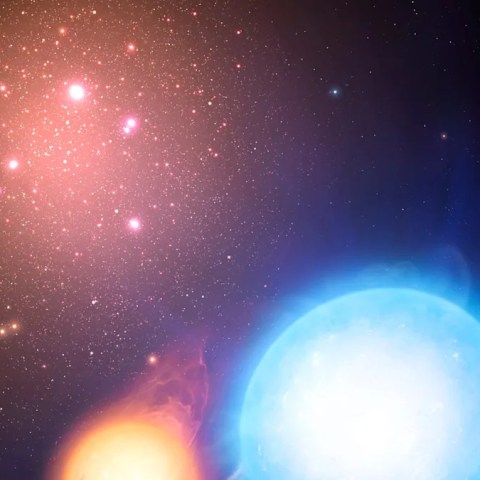Astronomers are closely studying two small galaxies, NGC 4532 and DDO 137, located on the edge of the vast Virgo Cluster. They’ve been intrigued by how the gas in these galaxies appears unusually messy and stretched.
Recent radio maps have shed light on this phenomenon. Researchers used special surveys to reveal a bridge of cold hydrogen gas connecting the two galaxies. This bridge extends into a long tail of gas, measuring an impressive 185,000 light-years, the longest of its kind ever observed.
Despite being 53 million light-years from Earth, the tail’s presence is striking. It serves as a pathway for the galaxies as they navigate their future within the cluster’s gravitational pull.
Professor Lister Staveley-Smith, leading the study from ICRAR at the University of Western Australia, explained, “Tidal forces are pulling these galaxies together, influencing the gas dynamics we see.” The galaxies’ movements toward the hot gas surrounding the Virgo Cluster lead to a phenomenon called ram pressure, which strips gas away from them.
Two main forces are at play here. The tidal forces tugging on the galaxies help create the shared bridge, while the pressure from the hot cluster gas pushes back, causing more gas to escape over time. Over a billion years, this combination can significantly change the gas content of the galaxies.
Researchers estimate the galaxies approach the cluster at about 880 kilometers per second. This rapid movement, combined with the density of the surrounding hot gas, results in a steady flow that pulls gas out of the galaxies.
The radio data shows both galaxies still rotating, but NGC 4532 spins faster. Its gas moves at around 93 km/s, while DDO 137 rotates at about 38 km/s. The way gas moves across the bridge indicates that gravity is pulling it from both galaxies, connecting them in a unique way.
Interestingly, there is a local equivalent of NGC 4532 and DDO 137. The Large and Small Magellanic Clouds near our Milky Way have a similar gas bridge, shaped by their gravitational interactions and the influence of the Milky Way’s hot halo. This suggests that these processes are common in the universe.
Why does this matter? Understanding how gas behaves in different environments is crucial for galaxy evolution. The study shows that even galaxies on the outskirts of a cluster feel significant influence. This ongoing process affects how stars will form in the future.
Research indicates that when there’s a lack of gas, galaxies can fade over time. The study highlights that NGC 4532 and DDO 137 are more than just neighboring galaxies; their interactions and the environment around them shape their destiny.
The findings offer a detailed glimpse into how galaxies transform as they interact with larger structures, revealing patterns that could be observed in similar environments across the universe.
The full study appeared in the Monthly Notices of the Royal Astronomical Society. For more insights into our universe, be sure to explore reputable sources like NASA and the European Space Agency.






















